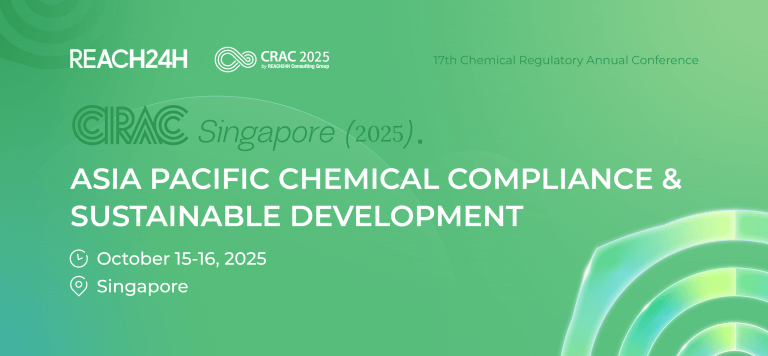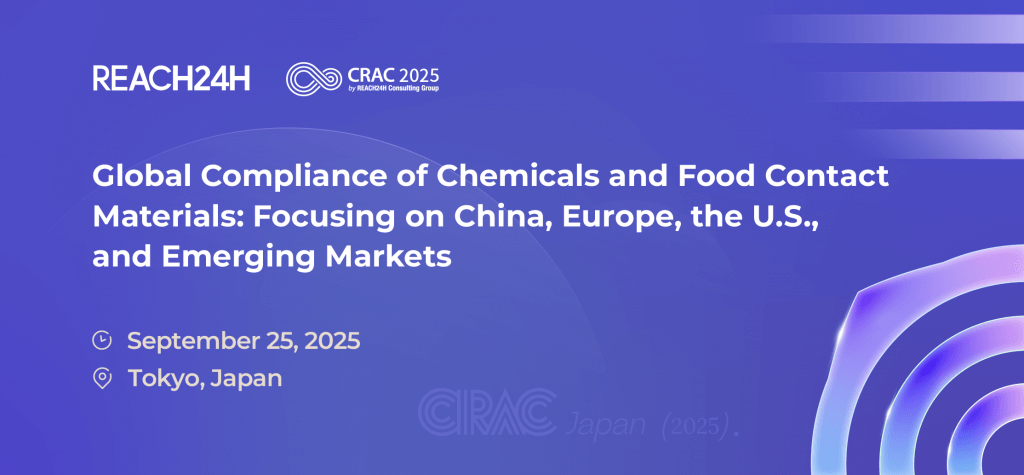Official Announcement
On September 1, 2025, the European Chemicals Agency (ECHA) proposed adding three substances to the Candidate List of Substances of Very High Concern (SVHCs) and has opened a public consultation. The public consultation period for the three proposals is now open and will end on October 16, 2025.
Name | EC Number | CAS Number | Proposing authority | Reason for proposing |
4,4'-[2,2,2-trifluoro-1-(trifluoromethyl)ethylidene]diphenol and its salts | - | - | Sweden | Toxic for reproduction (Article 57c) |
4,4'-methylenediphenol | 210-658-2 | 620-92-8 | Sweden | Toxic for reproduction (Article 57c) |
n-hexane | 203-777-6 | 110-54-3 | Slovenia | Specific target organ toxicity after repeated exposure (Article 57(f) - human health) |
Hazardous Properties and Industry Impact
4,4'-[2,2,2-trifluoro-1-(trifluoromethyl)ethylidene]diphenol (Bisphenol AF) and its salts
Bisphenol AF and its salts are commonly used as process regulators in the production of polymer materials and rubber, as well as cross-linking agents for certain fluoroelastomers. Studies have shown these substances are toxic for reproduction (Category 1 B), which is why they have been proposed for the SVHC list. The report published by ECHA specifically notes that the SVHC proposal covers not only Bisphenol AF itself but also all its salts, as they rapidly decompose in water and biological fluids to form Bisphenol AF, which also poses potential health risks.
It is also worth noting that Bisphenol AF has been identified in the proposal as a per- and polyfluoroalkyl substance (PFAS). PFAS, often called "forever chemicals" due to their environmental persistence, are a focus of EU regulatory scrutiny. The EU is currently preparing a comprehensive restriction proposal for thousands of PFAS substances. For related companies, this means using Bisphenol AF not only carries SVHC compliance risks but also a higher risk of being included in a broader PFAS restriction in the future.
4,4'-methylenediphenol (Bisphenol F)
Another bisphenol, Bisphenol F, has a chemical structure similar to the already heavily regulated Bisphenol A, and is often used as a substitute for it. Its applications include varnishes, coatings, adhesives, pipes, and dental sealants. It is also used as a color developer in thermal paper, with concentrations as high as 1-2%. Because Bisphenol F is also toxic for reproduction (Category 1 B), it has been proposed as an SVHC, which reflects the EU's proactive approach to addressing the challenge of "regrettable substitution." This prevents companies from replacing a restricted substance with another substance that has similar hazardous properties.
n-hexane
As a high-tonnage substance, n-hexane is widely used in industries such as food processing (e.g., vegetable oil extraction), rubber production, adhesives, and coatings. Studies have shown that it can have severe effects on the nervous system, with "specific target organ toxicity (repeated exposure) Category 1" (STOT RE 1). Some existing safety limits are not sufficient to provide adequate protection for workers. Long-term or repeated exposure can lead to symptoms like numbness and muscle weakness in the hands and feet, which may continue to worsen even after exposure ceases, creating an unacceptable health risk. Based on this, n-hexane is considered to be of "equivalent concern" to CMR substances in terms of human health hazards, and is also proposed as an SVHC to fill existing regulatory gaps in occupational health and consumer product safety.
Compliance Obligations
To protect human health and environmental safety, the EU is continuously advancing the identification and risk management of highly hazardous chemicals. In this increasingly strict regulatory environment, Rio Technology suggests that relevant companies should:
Conduct a comprehensive risk assessment and work closely with supply chain partners to actively submit comments during the public consultation period.
Evaluate the market prospects of their products and prepare for production optimization or the development of alternative substances.
Timely track changes to the SVHC list. Once a substance is added, companies must fulfill their compliance obligations under the REACH Regulation.
According to the EU REACH Regulation, all products containing SVHCs must be declared if the concentration is above 0.1%:
Supply Chain Communication
If the SVHC content in a substance or mixture exceeds 0.1%, a compliant Safety Data Sheet (SDS) must be provided to downstream users.
If an article contains an SVHC at a concentration above 0.1%, the supplier must provide the name of the substance and instructions for its safe use to downstream users. If a consumer makes a similar request, the supplier must also provide this information free of charge within 45 days.
SVHC Notification
When the SVHC content in an article exceeds 0.1% and the export volume is more than 1 ton per year, EU producers, importers, or sole representatives must submit an SVHC notification to ECHA. For newly added SVHC substances, the notification obligation must be fulfilled within six months of the substance's inclusion on the SVHC list.
SCIP Notification
According to the Waste Framework Directive (WFD), if an article contains an SVHC at a concentration above 0.1%, a SCIP notification must also be completed before the article can be placed on the EU market.





